2-Deoxyglucose impairs Saccharomyces cerevisiae growth by stimulating Snf1-regulated and α-arrestin-mediated trafficking of hexose transporters 1 and 3
- PMID: 25547292
- PMCID: PMC4333089
- DOI: 10.1128/MCB.01183-14
2-Deoxyglucose impairs Saccharomyces cerevisiae growth by stimulating Snf1-regulated and α-arrestin-mediated trafficking of hexose transporters 1 and 3
Abstract
The glucose analog 2-deoxyglucose (2DG) inhibits the growth of Saccharomyces cerevisiae and human tumor cells, but its modes of action have not been fully elucidated. Yeast cells lacking Snf1 (AMP-activated protein kinase) are hypersensitive to 2DG. Overexpression of either of two low-affinity, high-capacity glucose transporters, Hxt1 and Hxt3, suppresses the 2DG hypersensitivity of snf1Δ cells. The addition of 2DG or the loss of Snf1 reduces HXT1 and HXT3 expression levels and stimulates transporter endocytosis and degradation in the vacuole. 2DG-stimulated trafficking of Hxt1 and Hxt3 requires Rod1/Art4 and Rog3/Art7, two members of the α-arrestin trafficking adaptor family. Mutations in ROD1 and ROG3 that block binding to the ubiquitin ligase Rsp5 eliminate Rod1- and Rog3-mediated trafficking of Hxt1 and Hxt3. Genetic analysis suggests that Snf1 negatively regulates both Rod1 and Rog3, but via different mechanisms. Snf1 activated by 2DG phosphorylates Rod1 but fails to phosphorylate other known targets, such as the transcriptional repressor Mig1. We propose a novel mechanism for 2DG-induced toxicity whereby 2DG stimulates the modification of α-arrestins, which promote glucose transporter internalization and degradation, causing glucose starvation even when cells are in a glucose-rich environment.
Copyright © 2015, American Society for Microbiology. All Rights Reserved.
Figures
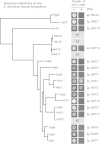
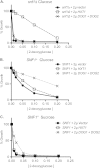
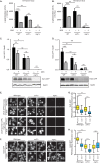
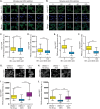
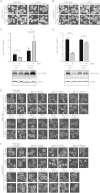
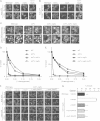
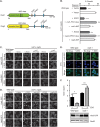

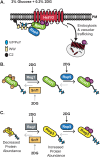
Similar articles
-
Regulation of the Yeast Hxt6 Hexose Transporter by the Rod1 α-Arrestin, the Snf1 Protein Kinase, and the Bmh2 14-3-3 Protein.J Biol Chem. 2016 Jul 15;291(29):14973-85. doi: 10.1074/jbc.M116.733923. Epub 2016 Jun 3. J Biol Chem. 2016. PMID: 27261460 Free PMC article.
-
Integrated control of transporter endocytosis and recycling by the arrestin-related protein Rod1 and the ubiquitin ligase Rsp5.Elife. 2014 Nov 7;3:e03307. doi: 10.7554/eLife.03307. Elife. 2014. PMID: 25380227 Free PMC article.
-
Differential Phosphorylation Provides a Switch to Control How α-Arrestin Rod1 Down-regulates Mating Pheromone Response in Saccharomyces cerevisiae.Genetics. 2016 May;203(1):299-317. doi: 10.1534/genetics.115.186122. Epub 2016 Feb 26. Genetics. 2016. PMID: 26920760 Free PMC article.
-
AMPK-Mediated Regulation of Alpha-Arrestins and Protein Trafficking.Int J Mol Sci. 2019 Jan 25;20(3):515. doi: 10.3390/ijms20030515. Int J Mol Sci. 2019. PMID: 30691068 Free PMC article. Review.
-
The ubiquitin code of yeast permease trafficking.Trends Cell Biol. 2010 Apr;20(4):196-204. doi: 10.1016/j.tcb.2010.01.004. Trends Cell Biol. 2010. PMID: 20138522 Review.
Cited by
-
Identification of nuclear genes affecting 2-Deoxyglucose resistance in Schizosaccharomyces pombe.FEMS Yeast Res. 2016 Sep;16(6):fow061. doi: 10.1093/femsyr/fow061. Epub 2016 Jul 31. FEMS Yeast Res. 2016. PMID: 27481777 Free PMC article.
-
Genetic dissection of early endosomal recycling highlights a TORC1-independent role for Rag GTPases.J Cell Biol. 2017 Oct 2;216(10):3275-3290. doi: 10.1083/jcb.201702177. Epub 2017 Aug 2. J Cell Biol. 2017. PMID: 28768685 Free PMC article.
-
ESCRT, not intralumenal fragments, sorts ubiquitinated vacuole membrane proteins for degradation.J Cell Biol. 2021 Aug 2;220(8):e202012104. doi: 10.1083/jcb.202012104. Epub 2021 May 28. J Cell Biol. 2021. PMID: 34047770 Free PMC article.
-
Internalization of Heterologous Sugar Transporters by Endogenous α-Arrestins in the Yeast Saccharomyces cerevisiae.Appl Environ Microbiol. 2016 Nov 21;82(24):7074-7085. doi: 10.1128/AEM.02148-16. Print 2016 Dec 15. Appl Environ Microbiol. 2016. PMID: 27694235 Free PMC article.
-
Novel mutation in hexokinase 2 confers resistance to 2-deoxyglucose by altering protein dynamics.PLoS Comput Biol. 2022 Mar 2;18(3):e1009929. doi: 10.1371/journal.pcbi.1009929. eCollection 2022 Mar. PLoS Comput Biol. 2022. PMID: 35235554 Free PMC article.
References
-
- Washburn MP, Koller A, Oshiro G, Ulaszek RR, Plouffe D, Deciu C, Winzeler E, Yates JR III. 2003. Protein pathway and complex clustering of correlated mRNA and protein expression analyses in Saccharomyces cerevisiae. Proc Natl Acad Sci U S A 100:3107–3112. doi:10.1073/pnas.0634629100. - DOI - PMC - PubMed
Publication types
MeSH terms
Substances
Grants and funding
LinkOut - more resources
Full Text Sources
Other Literature Sources
Molecular Biology Databases
